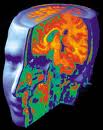Neuro-Linguistic Programming (NLP)
Neuro-Linguistic Programming (NLP) is the study of human performance that proposes a set of rules and techniques aimed at modifying behavior to achieve self improvement, self management , and more effective interpersonal communications. Based on certain assumptions about how language and movements of eyes and body affect brain (neurological) functions. Its basic primise is that to achieve any kind of measurable success one must create rich imagery of the goal, and must imitate (model) and internalize the appropriate behavioral patterns. Its name is derived from how senses filter and process experience before storing it in brain (neuro), how one uses words and symbols to create mental pictures(linguistic), and how desired habits and attitudes become ingrained (programming).
By analyzing the attributes of successful people in any field we begin to understand how our limiting beliefs systems can deter our own success. By doing so people can think, communicate and manage themselves, and others, more effectively. NLP explores the relationships between how we think (neuro), how we communicate (linguistic) and our patterns of behaviour and emotion (programmes). By studying and learning from these relationships people can effectively transform the way they traditionally think and act, adopting new, far more successful models of human excellence. This activity is called modeling and is a key feature that distinguishes NLP from psychology. In effect, NLP is a powerful change management tool that transforms the way people think and act to have the greatest impact both professionally and personally. That’s why NLP is one of the most powerful skills used in business management, psychology, sales, sports coaching and many forms of personal development. NLP is this gathering of information to make models, based on the internal experience and information processing of the people being studied and modeled, including the part that is outside of their conscious awareness. The word neuro refers to an understanding of the brain and its functioning. There is a relationship between perceptions, thinking and behavior that is neuro-linguistic in nature. The relationship is operating all the time, no matter what we are doing, and it can be studied by exploring our internal or subjective experience. The formal definition of Neuro-Linguistic Programming is: The study of the structure of subjective experience.
-
NLP can help you to ;
-
Be more successful by learning to influence your emotional and psychological states.
- Replace negative behaviors and habits with positive ones.
- Transform the way you go about everyday tasks.
- Be more aware of your impact on others and how to manage your behaviour for optimal results.
- Better understand your own motivations, needs and behaviors and use these positively to have the greatest impact.
- Better understand your staff’s and customer’s needs, motivations and behaviors.
- Improve and enhance your interpersonal communication at the office and at home.
NLP Modeling is a process used to discover and codify patterns of excellence, as demonstrated consistently by top performers in any field ideally by direct experience. This type of modeling involves spending time mimicking and practicing (acting as if the modeler is the expert) until the modeler can replicate the patterns with some consistencey and precision. Once this has been achieved, the modeler then refines the target skills by removing certain features to eventually discover the essential features (behavioural patterns) that make the difference between average performace and top performance, thus building a learnable/transferable model. According to John Grinder (the co-founder of NLP) there are 5 steps to the NLP modeling process:
1. Identify an expert (outstanding performer) that you want to model. Create a well-formed outcome and life lines for this project.
2. Arrange to observe and mimic while the expert is in the field of expertise (direct access is the best option, then video, then high quality audio).
3. Without presence of the expert, the modeler practices until the same set of responses can be elicited with a similar of quality in a similar context. Removing certain features to discover the essential elements while practicing to find out what works, and what can be dropped out. At this stage the modeler may require to return to step 2 to observe and mimic some more before continuing.
4. Codify the model in some way via video, or other medium.
5. Teach the model someone else. If the student can then elicit the same set of responses with the same or similar quality as the original expert then this is a workable model. If not, may have to return to step 2 or 3.
Also, see “Recommended Products” page for programs that utilize NLP.
Recommended Products ;




